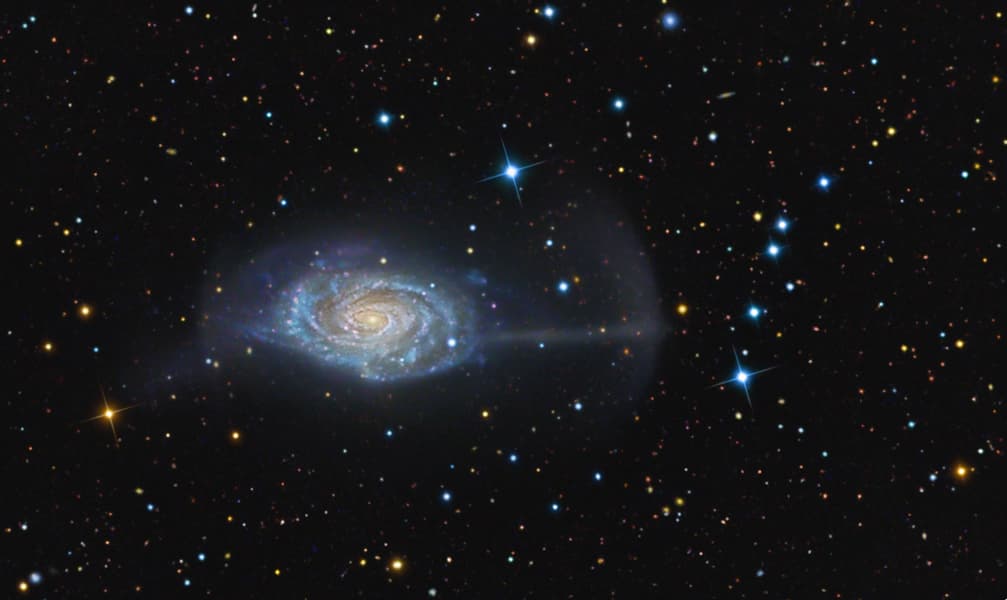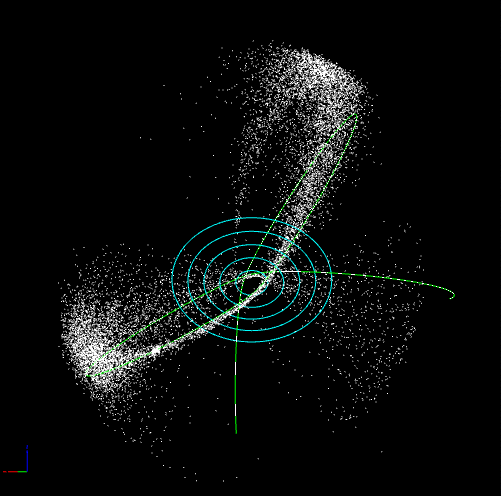
NGC4651 is called Umbrella Galaxy takes because of the tidal feature (on the right), the shredded remains of a smaller galaxy that was eaten in the distant past. CREDIT: NASA
Galaxy mergers are violent interactions between galaxies and they are consider one of the fundamental steps in how galaxies form and evolve. Mergers occur when two (or more) galaxies collide. This interaction can radically alter the overall structure of the progenitors due to the tidal forces between the galaxies and the friction between the gas and dust that gets moved around during the process. If two galaxies of approximately the same size collide at suitably wide angles and relatively low speeds it is called ‘Major Merging’ and the progenitors’ morphologies are irreversibly altered.
If one of the galaxies is significantly larger than the other, the larger will often ‘eat’ the smaller, absorbing most of its gas and stars, while the larger one remains mostly undisturbed. This is often referred to as ‘Galactic Cannibalism’ or ‘Minor Merging’, where the mass ratio between the two galaxies is less than 1:3.
A paper lead by Caroline Foster has been recently published in the Monthly Notices of the Royal Astronomical Society detailing the kinematics of NGC 4651 (AKA the Umbrella galaxy due to it’s peculiar shape). The Umbrella shows signs of a recent minor merger, with long tidal tails protruding from the galaxy itself. Using observations from the Keck Observatory and the Subaru Telescope to identify dynamical tracers and using that information to run a N-body simulation, the team was able to establish exactly how the galaxy was being ripped apart.
This technique can be applied to many other objects and it will hopefully lead to a better understanding of the finer details of galaxy evolution.

In this gif, the disk of the Umbrella galaxy is indicated with blue circles, the path of the eaten companion in green and in white are the location of the stars that belonged to the companion.
REFERENCES
Foster C., Lux H., Romanowsky A.J., Martinez-Delgado D., Zibetti S., Arnold J.A., et al., “Kinematics and simulations of the stellar stream in the halo of the Umbrella Galaxy”, 2014, MNRAS accepted (preprint)

